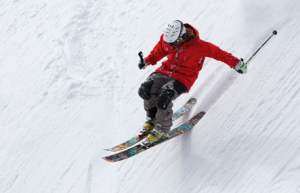
Alt text is therefore vital for search engines to enable them to better understand a page and provide people with the best possible results when they are searching online.
What is Alt Text?
Alt text, also known as an alt attribute, alt description or alt tag, is a snippet of detailed information describing what an image shows. The origin of setting alt text was developed in order to help the blind and visually impaired understand what an image portrays when the screen reader relays the text snippet back to them, thus improving their internet browsing experience. However, aside from that vital function, alt text is crucial in enabling your website images to be accurately appreciated and acknowledged by search engines when they analyse your content in response to a search.
How Does Alt Text Impact SEO?
We've already highlighted that setting alt text for images is very important for SEO and is a key contributing search engine ranking factor. Alt tags provide context to what an image is displaying, informing search engine crawlers and allowing them to index an image correctly. However, not only do alt tags help search engine crawlers, not setting alt tags for your images can have a detrimental effect on the ranking of your web pages.
Alt text is also important when browsers are unable to render a page properly, meaning the web page does not display the images. In place of images the website will return the alt attributes instead, describing what image should be showing. If you do not have any alt attributes set then this means the user will have no idea what image was meant to display, providing a significantly poorer user experience.
Fundamentally, the purpose of alt text is to improve accessibility by describing what an image is showing to visitors who do not have the ability to see them. However, it also helps search engine crawlers and so improves SEO. Failing to set alt attributes for images means that your website becomes difficult for screen readers and browsers to interpret and reduces the user experience for anyone who is visually impaired. Ensure that every visitor, as well as search engines can access your content by making sure you set descriptive alt text for all your websites images.
How To Write Good Alt Tags
When writing alt tags, you need to avoid writing them solely for SEO purposes, as this can alter the true purpose of writing alt tags. Remember what alt text was first introduced for, to help the blind or visually impaired understand what is happening in an image. This means your first priority should be to describe what is happening in the image and avoid keyword ‘stuffing’. Keep alt tags short and descriptive, using just one or two keywords.
Examples of Good & Bad Alt text
Bad – Skiing
Good – Man skiing down snow covered mountain

Bad – Builder
Good – Construction worker cutting wood with a power tool

Bad – Stadium
Good – Crowded Football Stadium

The alt text does not have to be long, but it does need to be detailed and descriptive to benefit the user as much as possible.
Make Sure Your Images Have Alt Text!
When you upload an image make it a habit to set an alt tag. Adding alt text to your images is very important to ensure your website is search engine optimised. If you know that you have not been setting alt tags for your images then you should set the time aside to go through them and add relevant, descriptive alt text throughout your website.
If you would like more information about adding alt text to your images, then please feel free to contact the Innovation Visual team who will be happy to help.

.png?width=250&height=141&name=image-gen%20(1).png)








